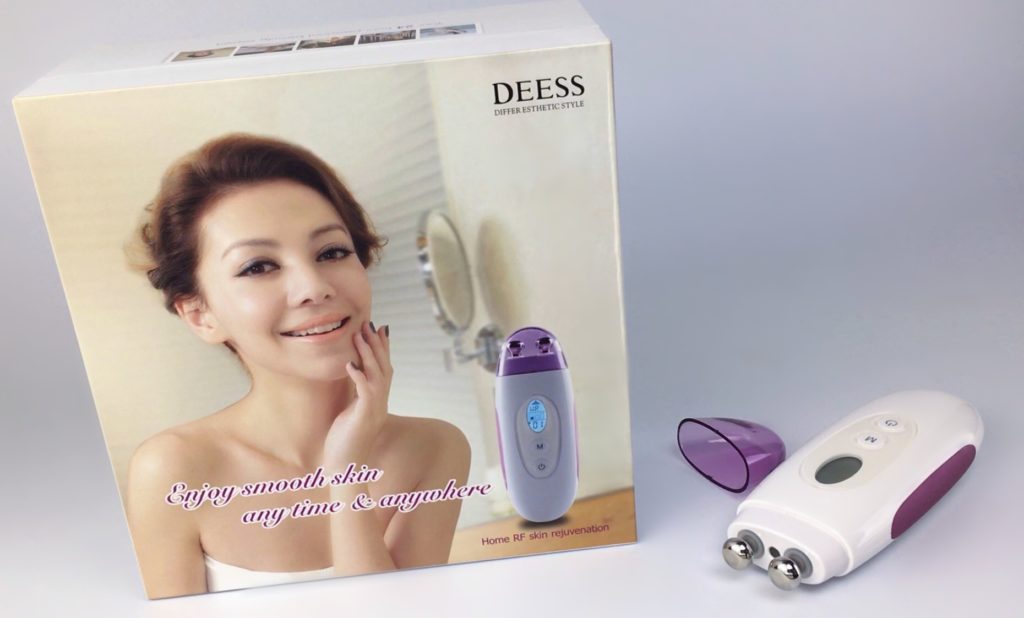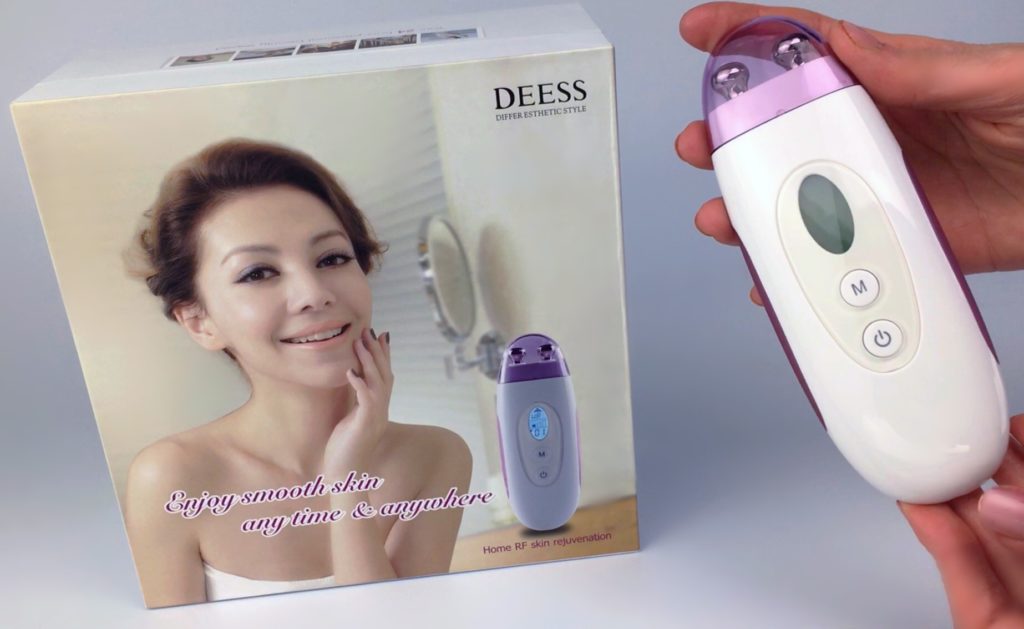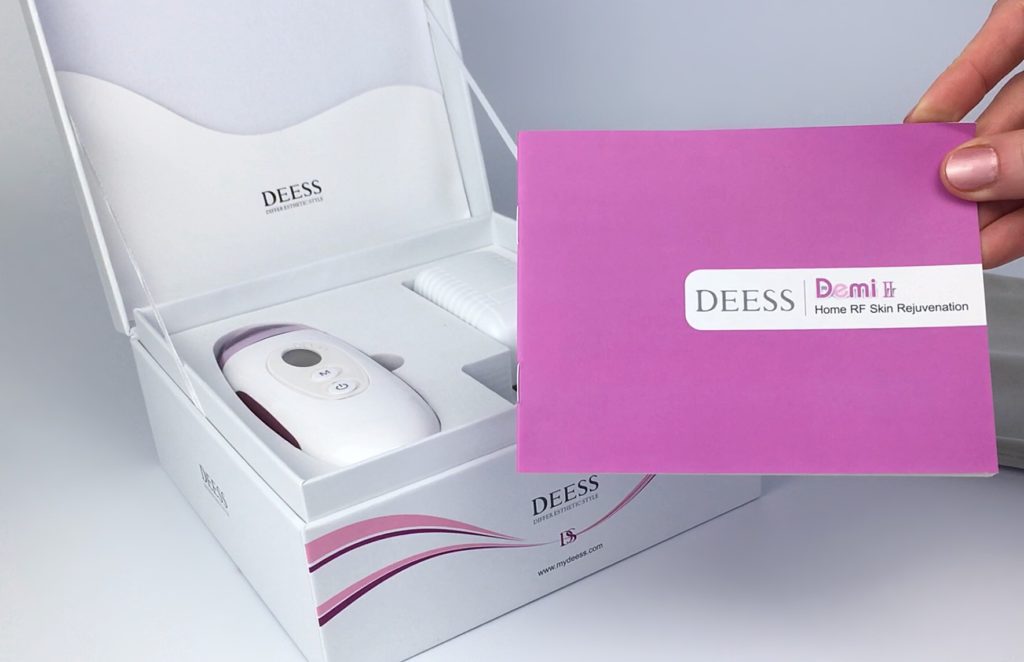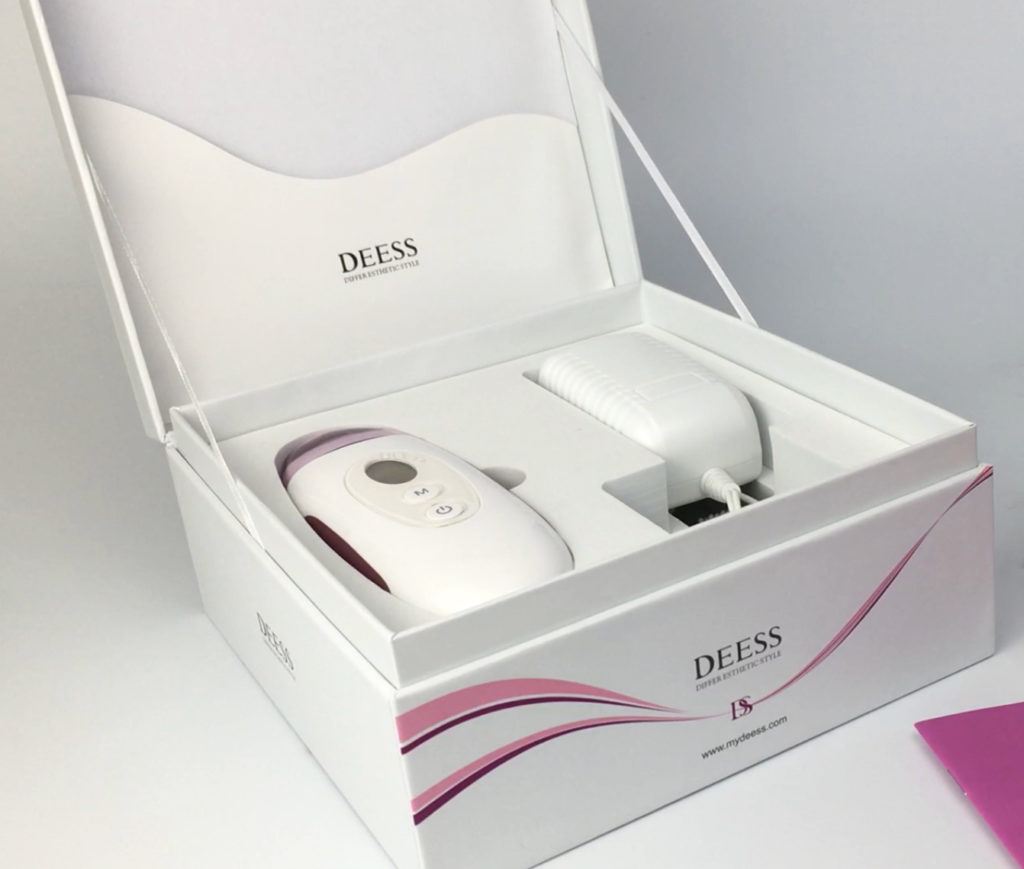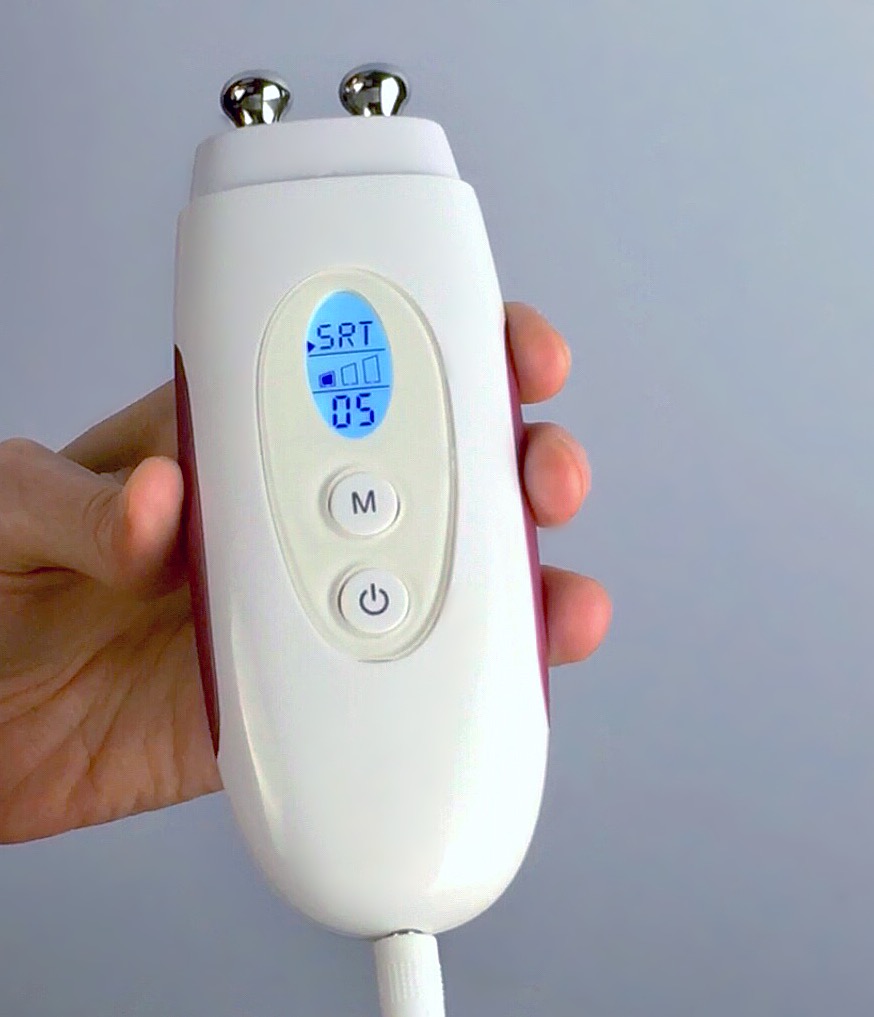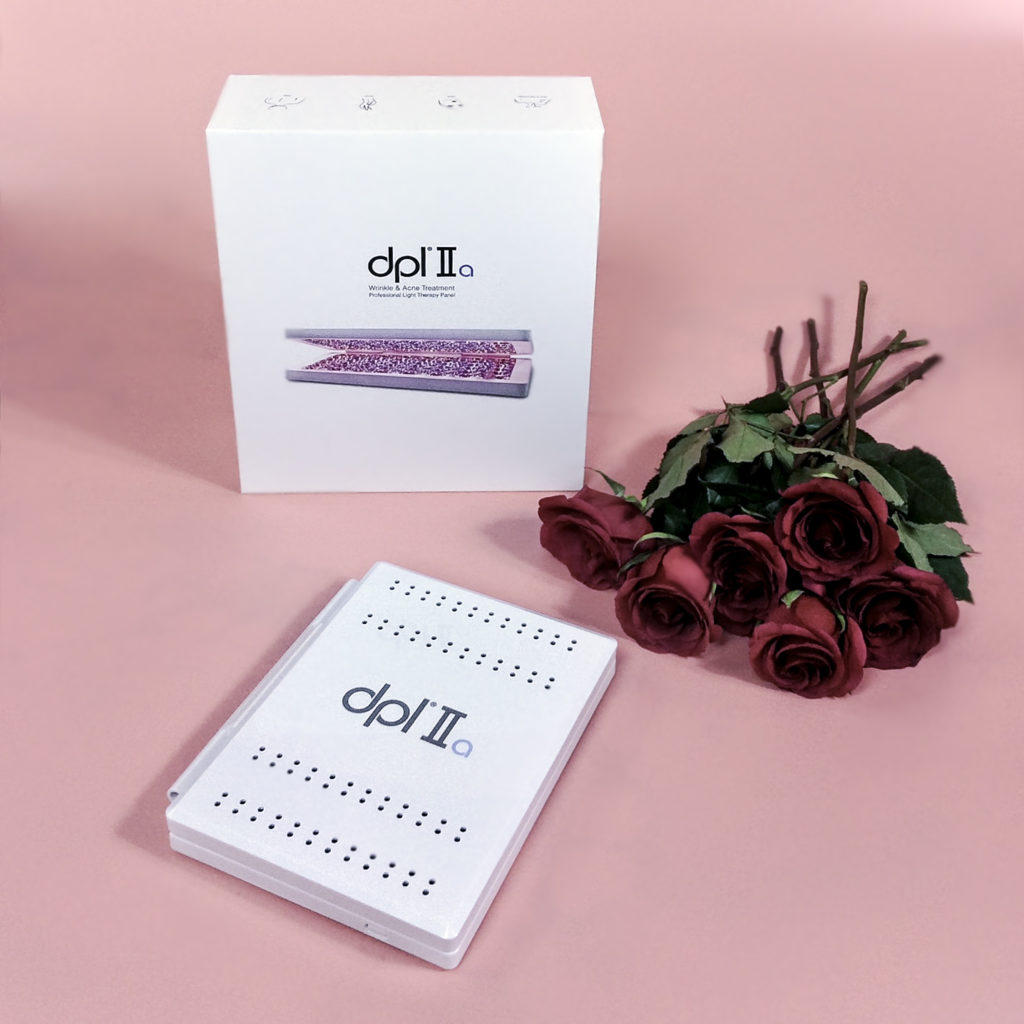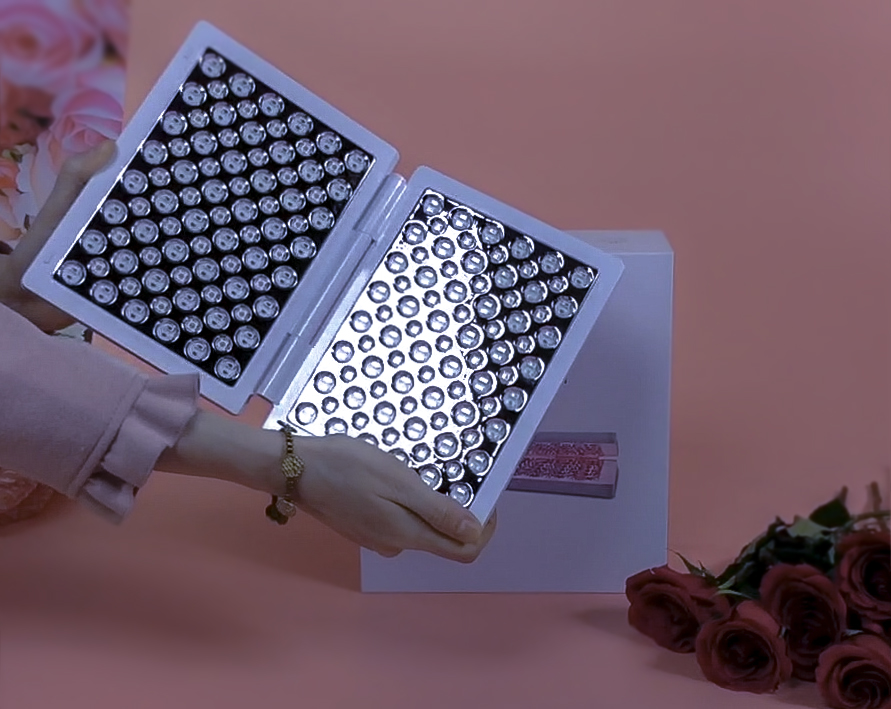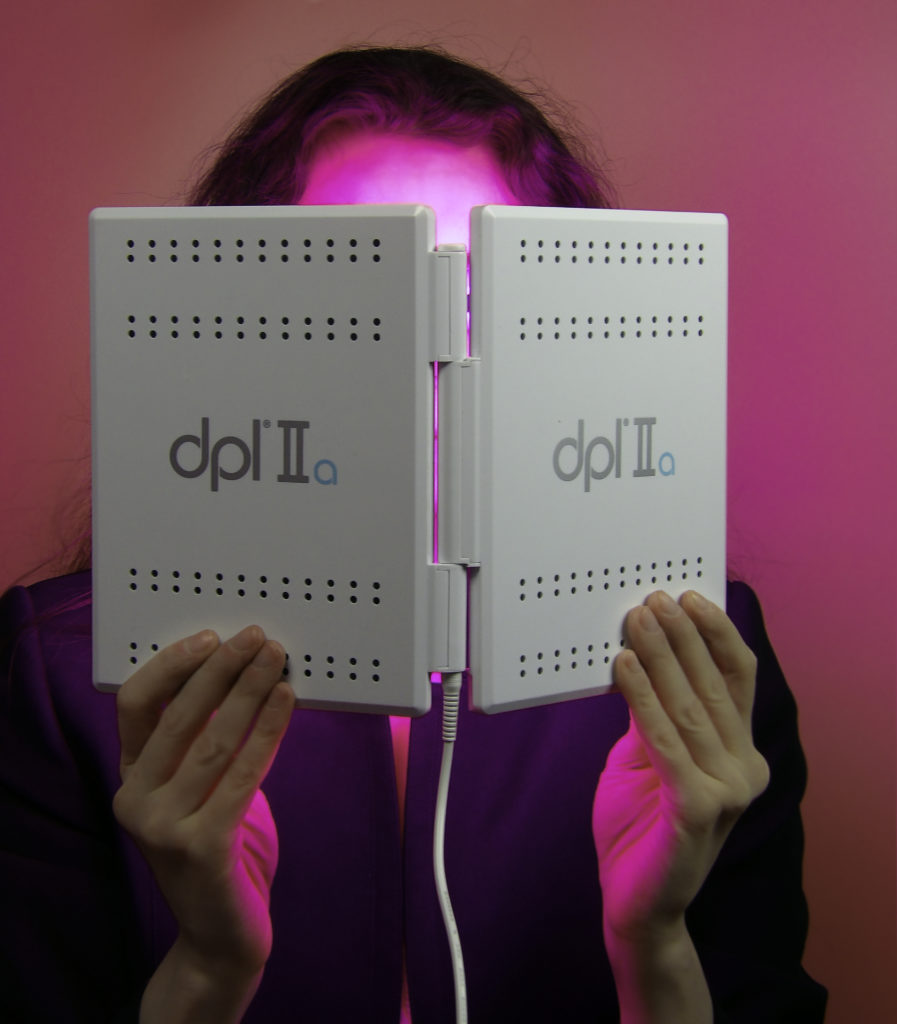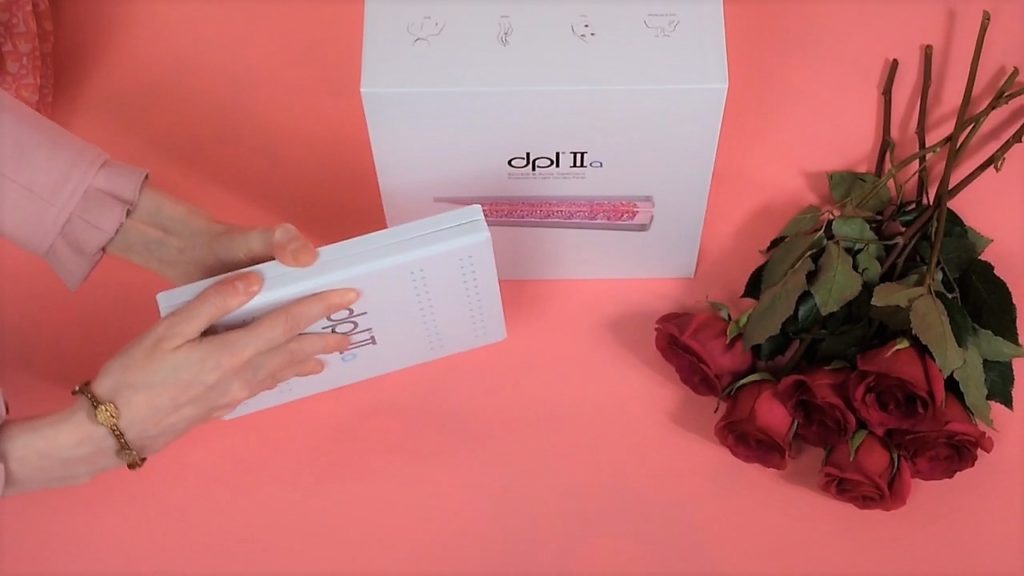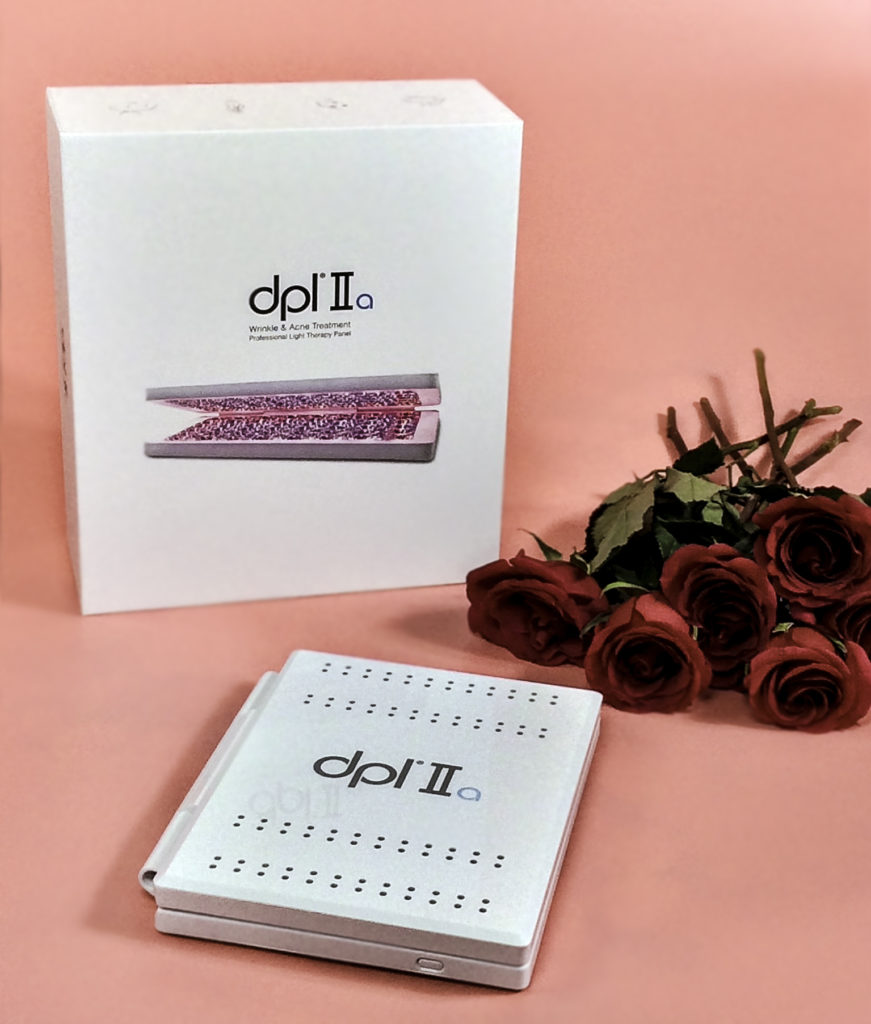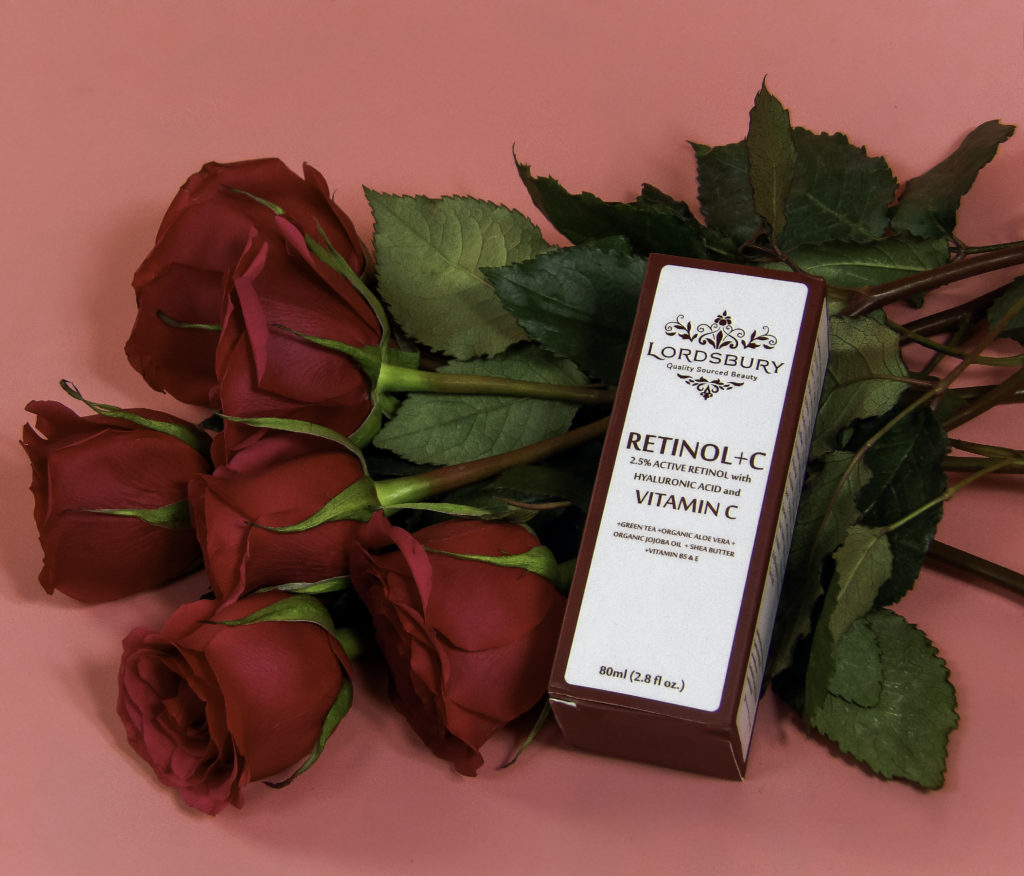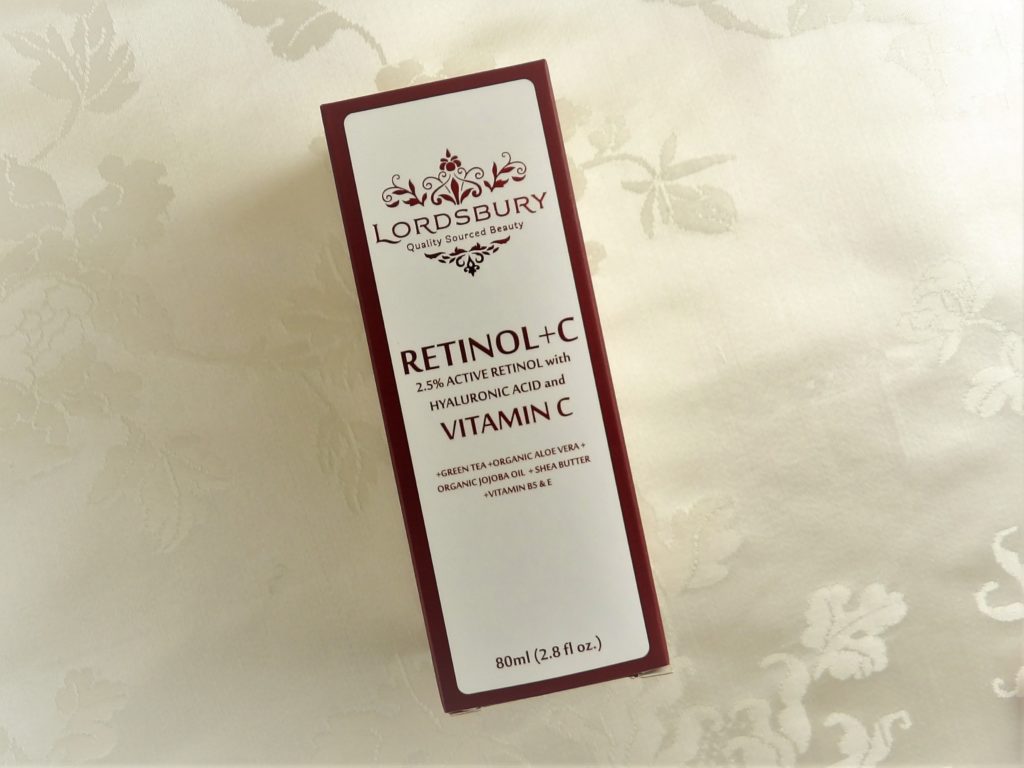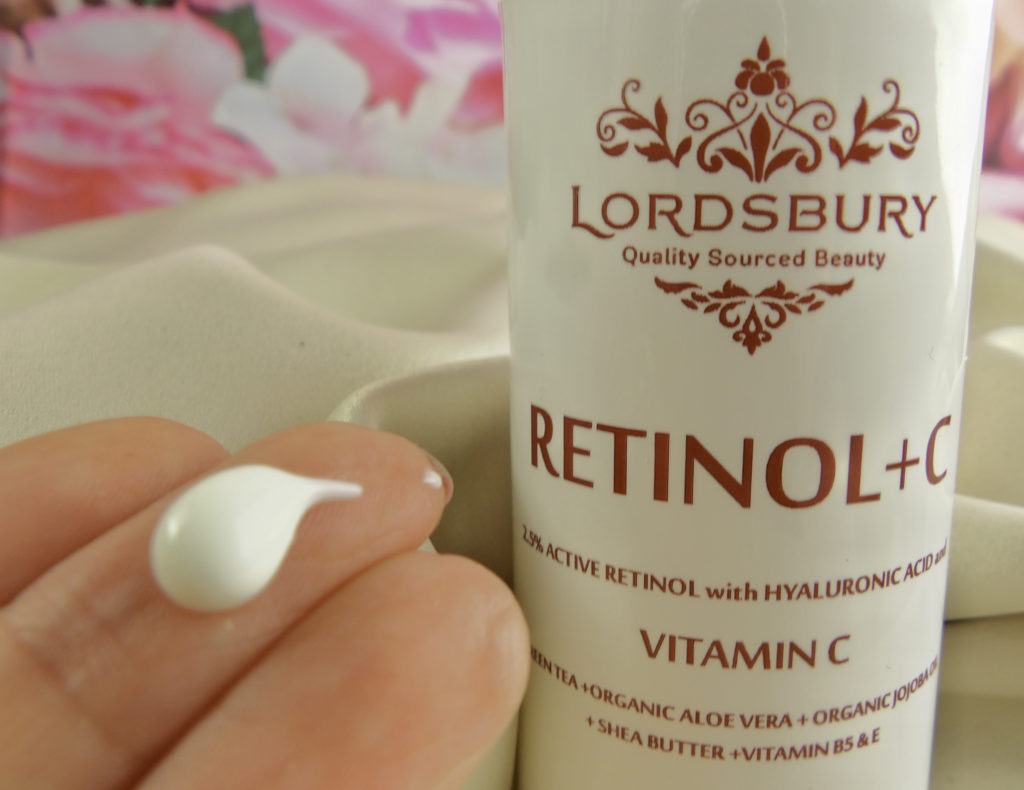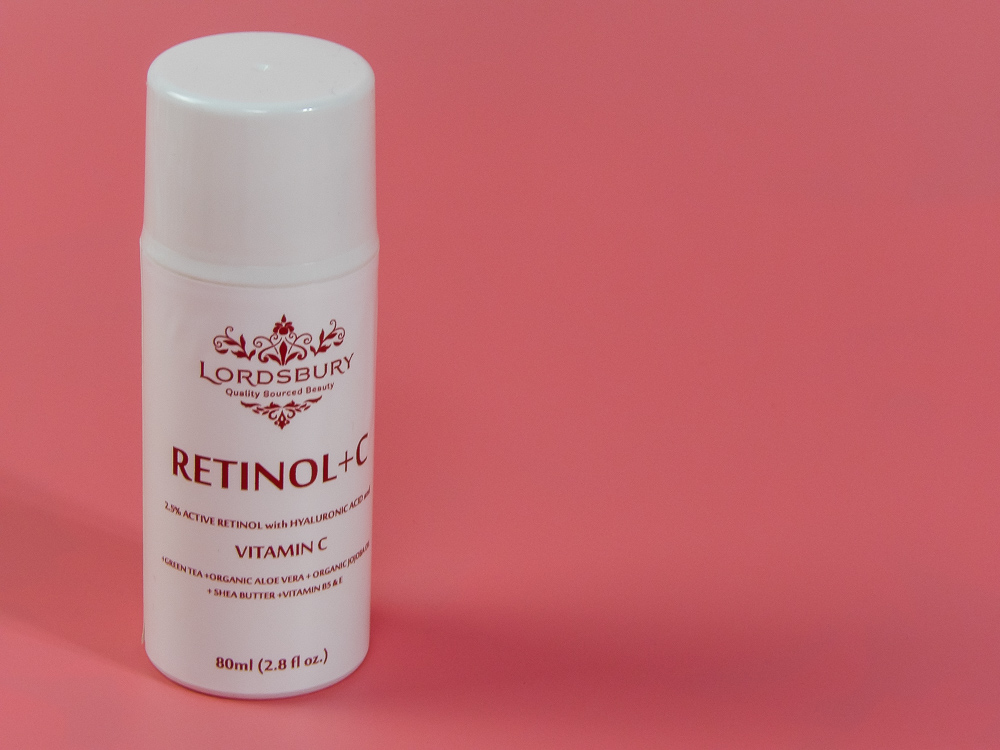We live in a day and age that a 13-step skincare process is not uncommon. But what if you could skip the other 12 products and just used one decadent product for multiple beauty needs?
Well now you can, with the incredibly luxurious Wild Beaute Coconut Tangerine Melt. Wild Beauté Coconut Tangerine Melt is made of only two ingredients: Organic Cold-pressed Coconut Oil, and Organic Cold pressed Tangerine Essential Oil. The two ingredients work in tandem to provide the skin with intense hydration. And the scent is absolutely amazing: I’ve been wearing it as my fragrance lately instead of perfume!
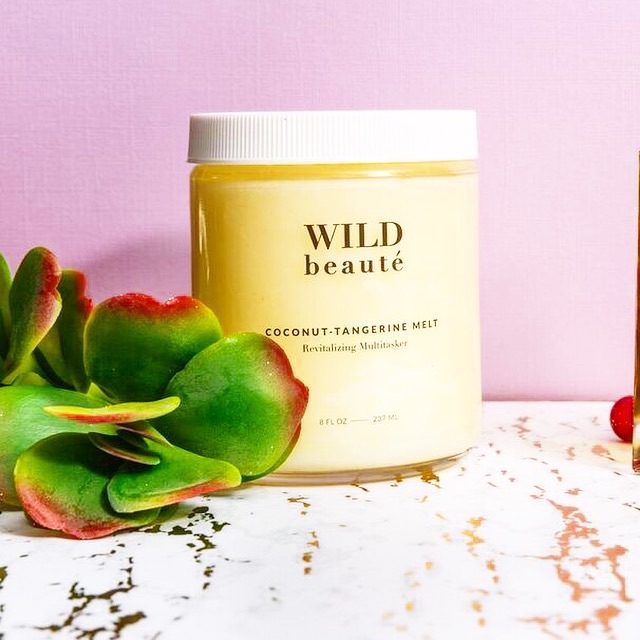
Wild Beauté Coconut Tangerine Melt
TIP: To add a little bit more decadence, use a small silver spoon to measure out the amount you want to use. I use a beautiful vintage spoon, and it looks gorgeous next to the jar on my vanity table!
FACE
You probably don’t need me to extol the virtues of Coconut Oil, but it’s worth spending a bit of time on since this is an especially high-grade, well crafted Coconut Oil. Cold-Pressed Coconut Oil maintains more of the beneficial aspects and is a truer form of the oil. In traditionally pressed Coconut Oil, a lot of what makes Coconut Oil helpful is “cooked off” since heat is used. So when looking for Coconut Oil, always look for a Cold-Pressed one like Wild Beaute Coconut Tangerine Melt.
Tangerine Oil has antifungal and antiseptic properties, which makes it ideal for skincare, especially as a gentle treatment for acne. It also helps to heal skin – great for dabbing on acne scars!
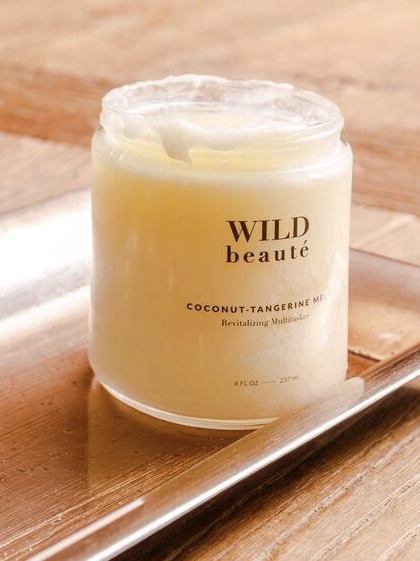
Wild Beauté Coconut Tangerine Melt
Everyday: I love using a thin layer of Wild Beauté Coconut Tangerine Melt under my sunscreen on days I know I’ll be in dry conditions, like forced heat in an office. My skin doesn’t get oily but remains dewy all day. It is also a fantastic lip primer. I haven’t had completely smooth lips since I was four, but Wild Beaute Coconut Tangerine Melt makes my lips smooth and ready for lipstick!
Intense Moisture Mask: As a soothing Sunday Night treat, I take a generous amount of Coconut Tangerine Melt, melt it slightly between my fingers, and smooth it over my face. Then I place a hot washcloth over my face, put on some relaxing music, and rest for twenty minutes. It smells amazing, and when my twenty minutes is up, I gently massage my skin to allow every last drop of moisture to absorb. My skin is so smooth and glowing, and it stays incredibly soft! Putting on makeup on Monday morning is so much easier since I have soft, plump skin to work with. And I don’t limit it to just Sundays, I use it as a moisture mask anytime my skin needs a shot of extra moisturizer!
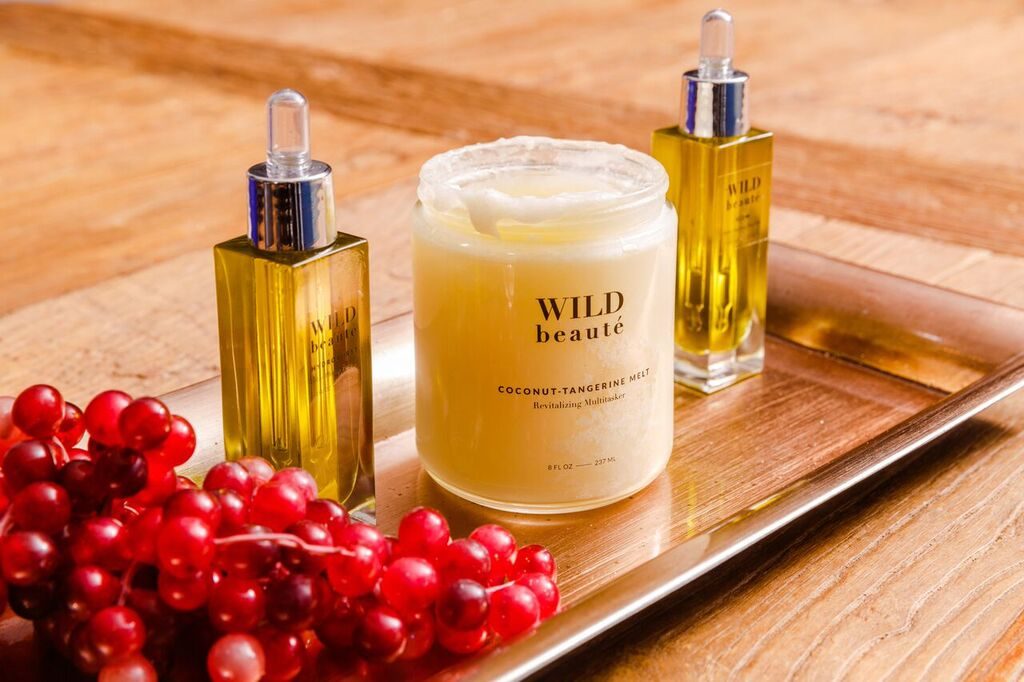
Wild Beaute Coconut Tangerine Melt
HAIR
Ah, using Wild Beaute Coconut Tangerine Melt on hair. Your hair will thank you for this. Once a week, I like to melt some and use it as a hot oil treatment, and then wrap my hair in a hot towel. I leave it in for about an hour and then rinse it out. The result? My hair is amazingly shiny and soooooo soft! I also do mid-week treatments on my ends to keep them healthy.
It is also fantastic for second-day hair. I take a small amount and emulsify it between my hands, and then scrunch it into my hair and massage my scalp with it. My hair looks bouncy, shiny, and smells fantastic. It works the same if you want straight hair, just use a light hand.
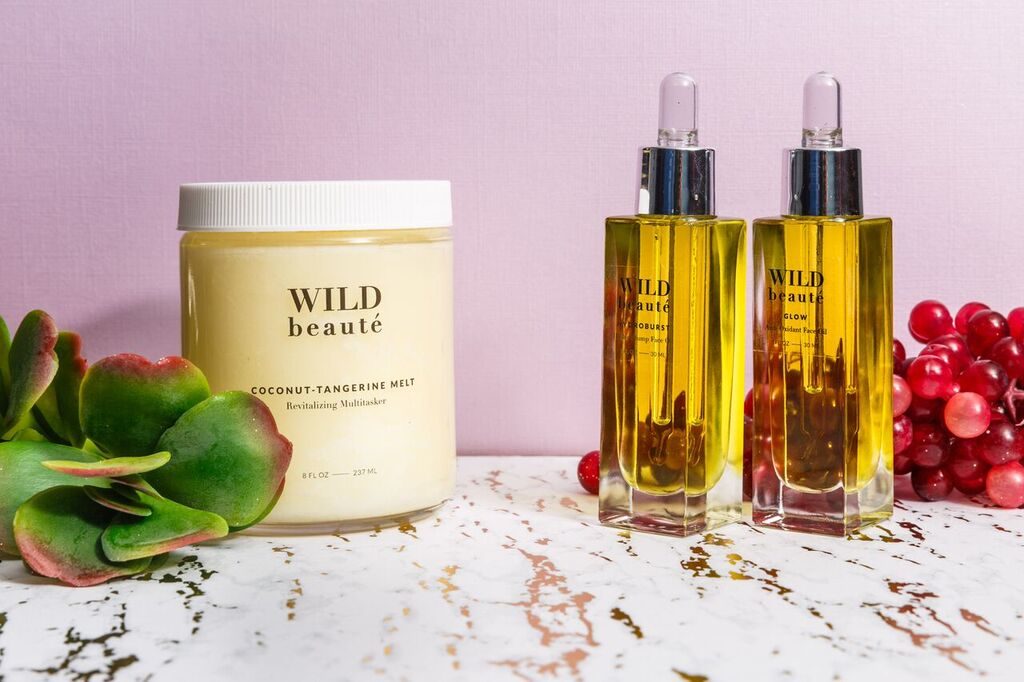
Wild Beaute Coconut Tangerine Melt
BODY
Want the most decadent shave you’ve ever gotten? Use Wild Beaute Coconut Tangerine Melt as a shave cream. Apply it to your legs before you get in the shower, and let it set in the steam for a few minutes before you shave. Not only will you get the smoothest shave of your life, but your shower will smell amazing!
I also love using it as a post-shower moisturizer. It gives my arms a healthy glow and makes them so soft. I especially love it on elbows, knuckles, and the bane of my beauty existence, my cuticles. It moisturizes my cuticles and keeps hangnails from forming.
MAKEUP
Makeup is fun. Taking off makeup at the end of a long day is not fun. But using Wild Beauté Coconut Tangerine Melt to take off your makeup at the end of the day is a luxurious experience that you will look forward to. No more falling asleep in your makeup!
Just take a bit, rub it between your fingers, and spread it over your face. It will gently remove your makeup, even waterproof mascara. Gently wipe your face with a soft towel, and your face will be clean and moisturized at the same time!
A little makeup hack I love: if your skin is looking a little dull during the day, pat a tiny bit of Coconut Tangerine Melt onto your cheekbones, brow bone, or anywhere else that could use a little glow. Instant highlighter!
Something else we love about Wild Beauté products: they are made by a small company of four women. This means they know exactly what constitutes a great beauty product, because they are making the products that they need and use themselves! I love women-owned companies who just want to help other women! And as the icing on the cake, Wild Beauté supports Wildlife conservation and protection and works with global organizations to protect animals worldwide. And they are cruelty-free!
Find Wild Beaute Coconut Tangerine Melt at http://wildbeaute.com/product/coconut-tangerine-melt/ for $40.
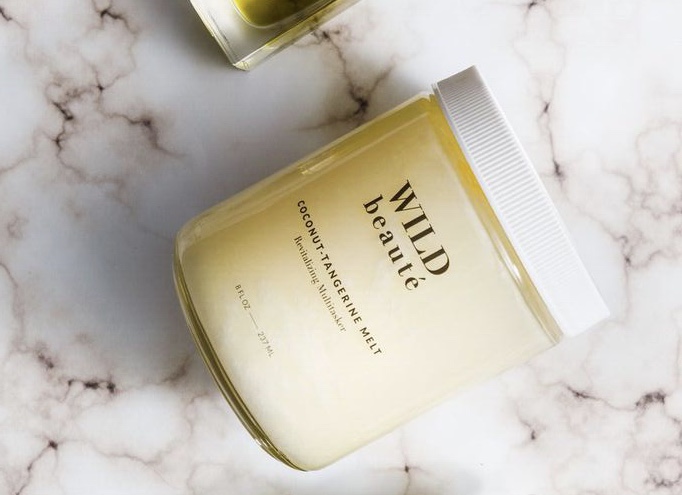
Wild Beaute Coconut Tangerine Melt
Style Chicks received Wild Beaute Coconut Tangerine Melt in exchange for our unbiased review and received compensation for our time and effort. However, our experience with the product and the opinions expressed in this review are 100% ours.
